Stats 10 Midterm- UCLA
1/48
There's no tags or description
Looks like no tags are added yet.
Name | Mastery | Learn | Test | Matching | Spaced |
|---|
No study sessions yet.
49 Terms
Variable
any characteristics, number, or quantity that can be measured or counted. It is called a ---- because the value may vary between data units in a population, and may change in value over time or observation. (usually put on columns in data table)
Observation
occurrence of a specific variable that is recorded about a data unit. (usually put on rows in data table)
Population
collection of observations of interest. This number is usually very large and nearly impossible to obtain measurements from.
Sample
portion of a population of interest. A sample is usually taken to measure a characteristic about a population.
Numerical
---- Variable (Quantitative) : Temperature, GPA, Height, Distance, ...
Categorical
---- Variable (Qualitative) : Eye color, Gender, Year in school, Major in college, ...
Frequency
natural way to summarize the categorical variables
Confounding Variable
A difference between the two groups that could explain why the outcomes were different. affects the variables of interest but is not known or acknowledged, and thus (potentially) distorts the resulting data
observational study
In an ---- ---, researchers don't assign choices, they simply observe them
experimental study
In an experiment, the experimenter actively and deliberately manipulates the treatment variable and assigns the subjects to those treatments, generally at random.
Large sample size, Random assignment/ bias, Double-blinded experiment, placebo
Four things that are important in an experimental study:
Stem-and-leaf plot
Divides each observation into a "stem" and "leaf". Best for numerical data
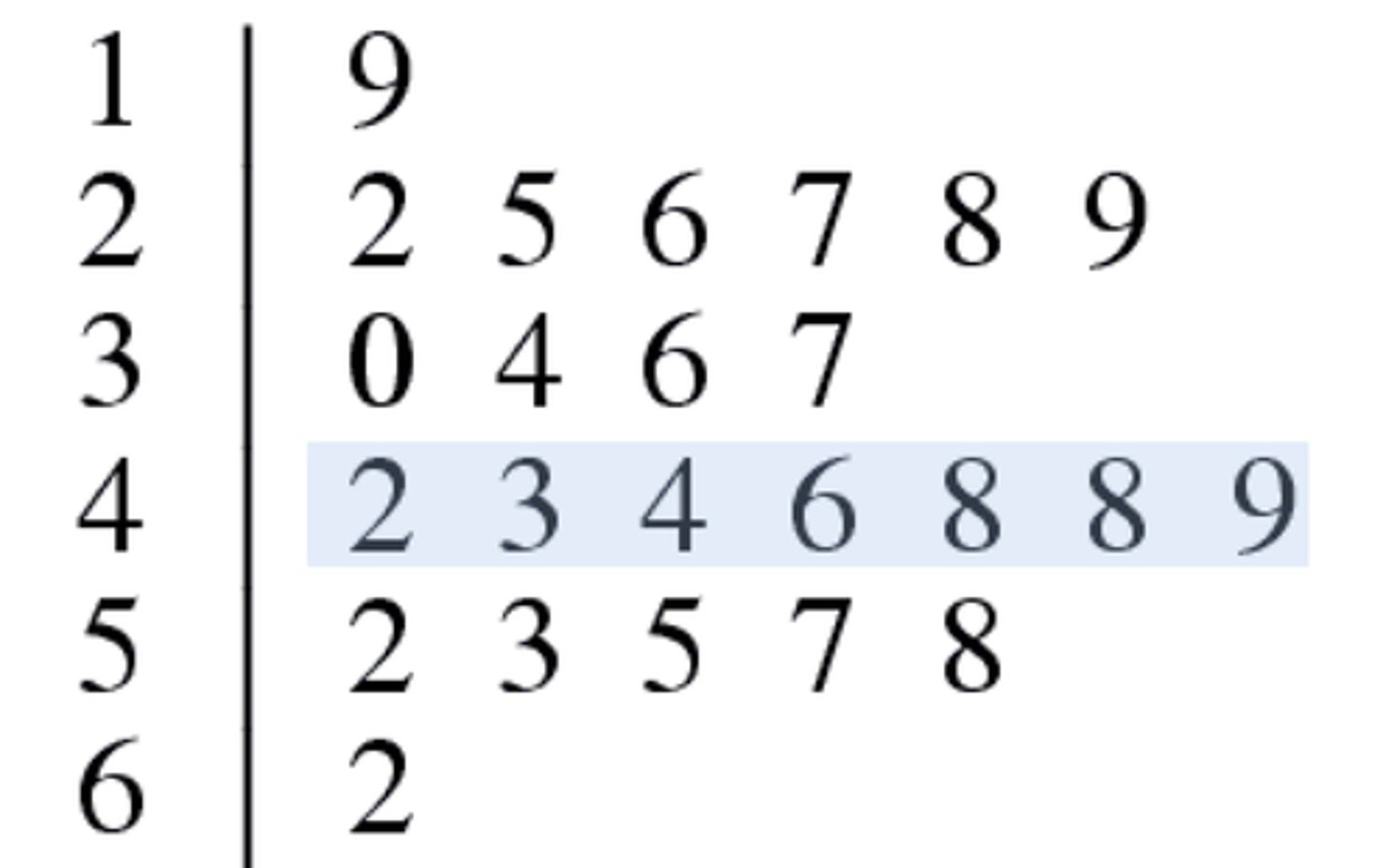
Dot Plot
Places a dot along an axis for each case in the data. Best for numerical data
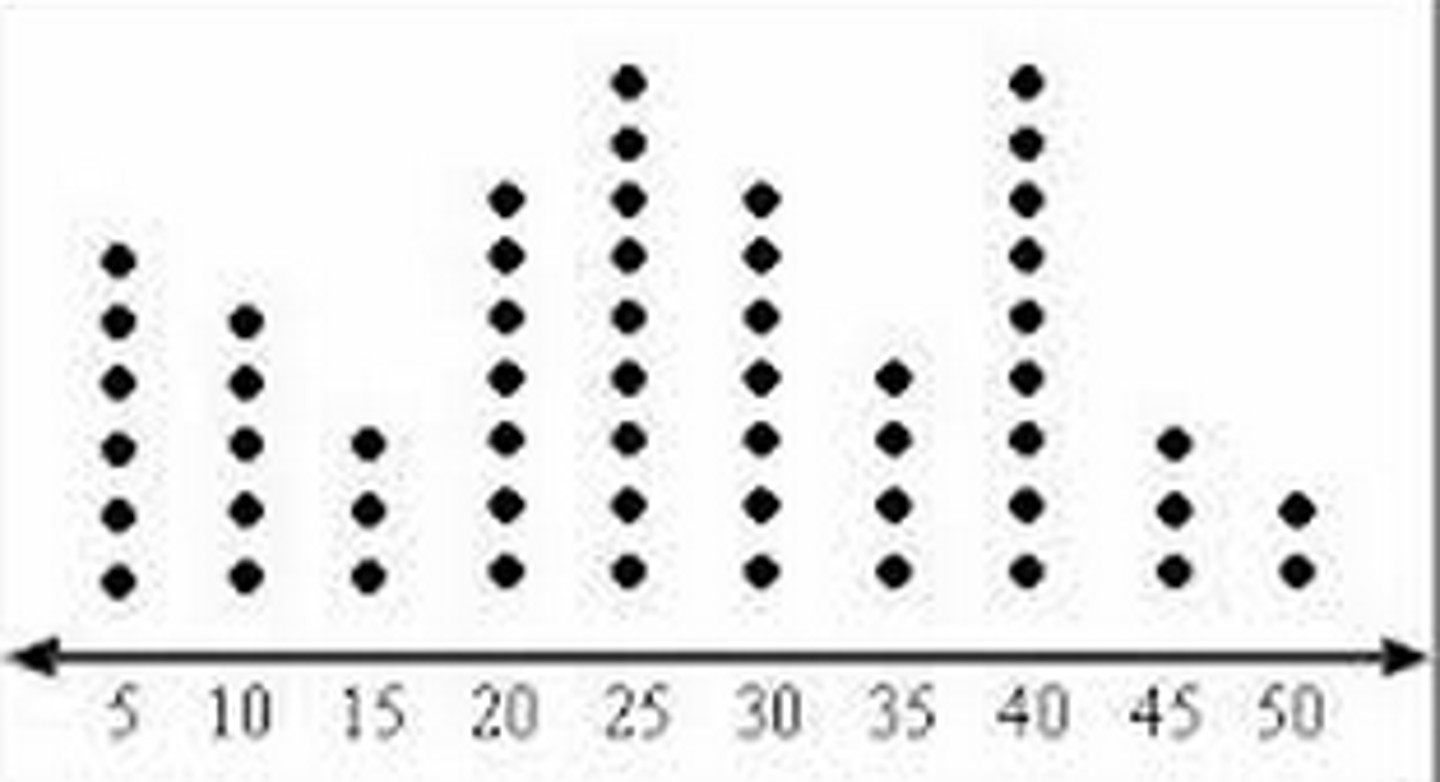
Histogram
displays the number of cases in each bin. (Bin widths are a personal choice. Too small a width shows too much detail while too large a width shows too little.)
The horizontal axis is numerical and the vertical axis is the (relative) frequency. Best for numerical data
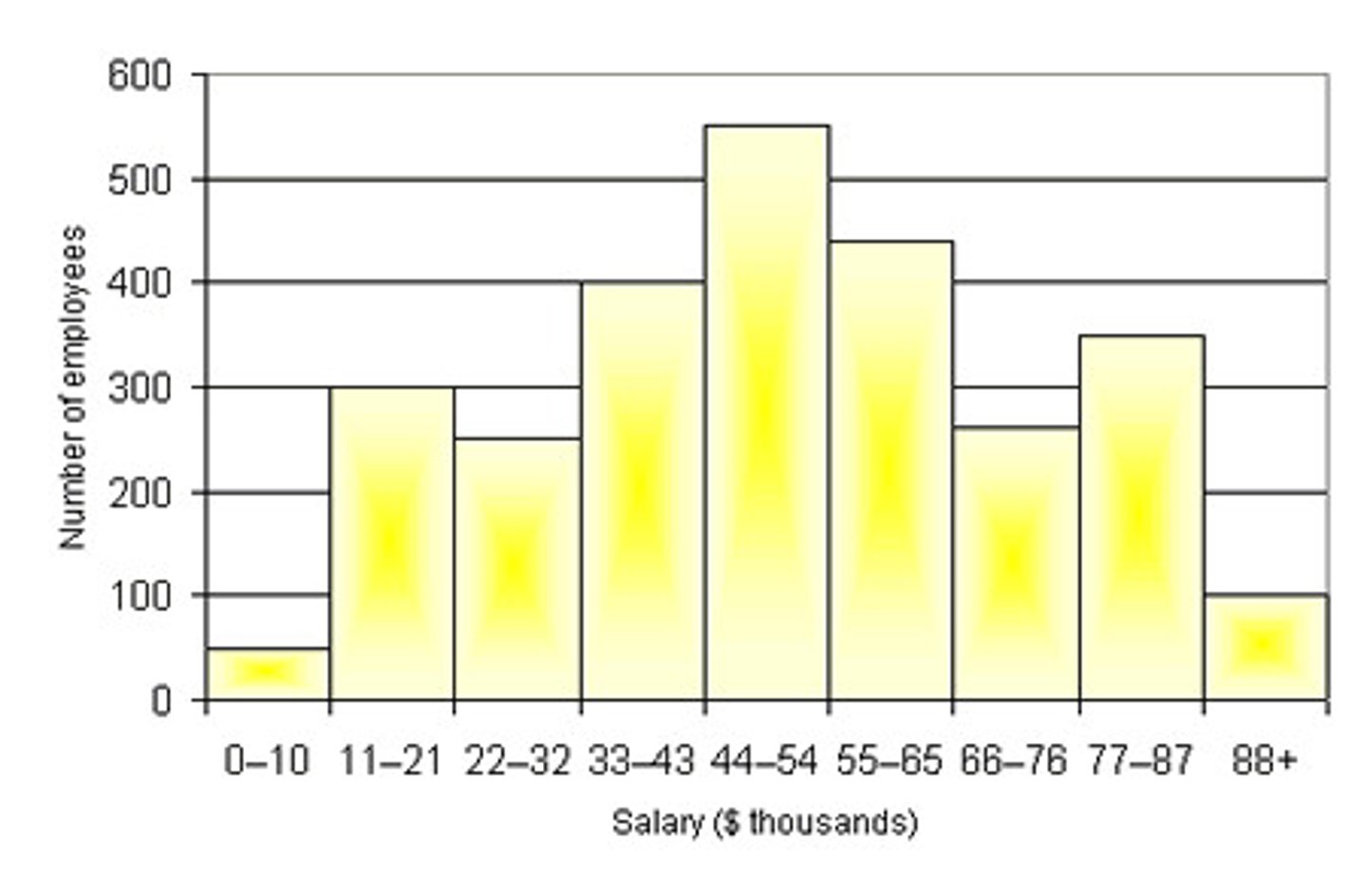
relative frequency
how often something happens divided by all the possible outcomes. Used in histogram y-axis
Shape
focuses on number of modes (peaks), Symmetricity, outliers, central tendency
Unimodal
single mode
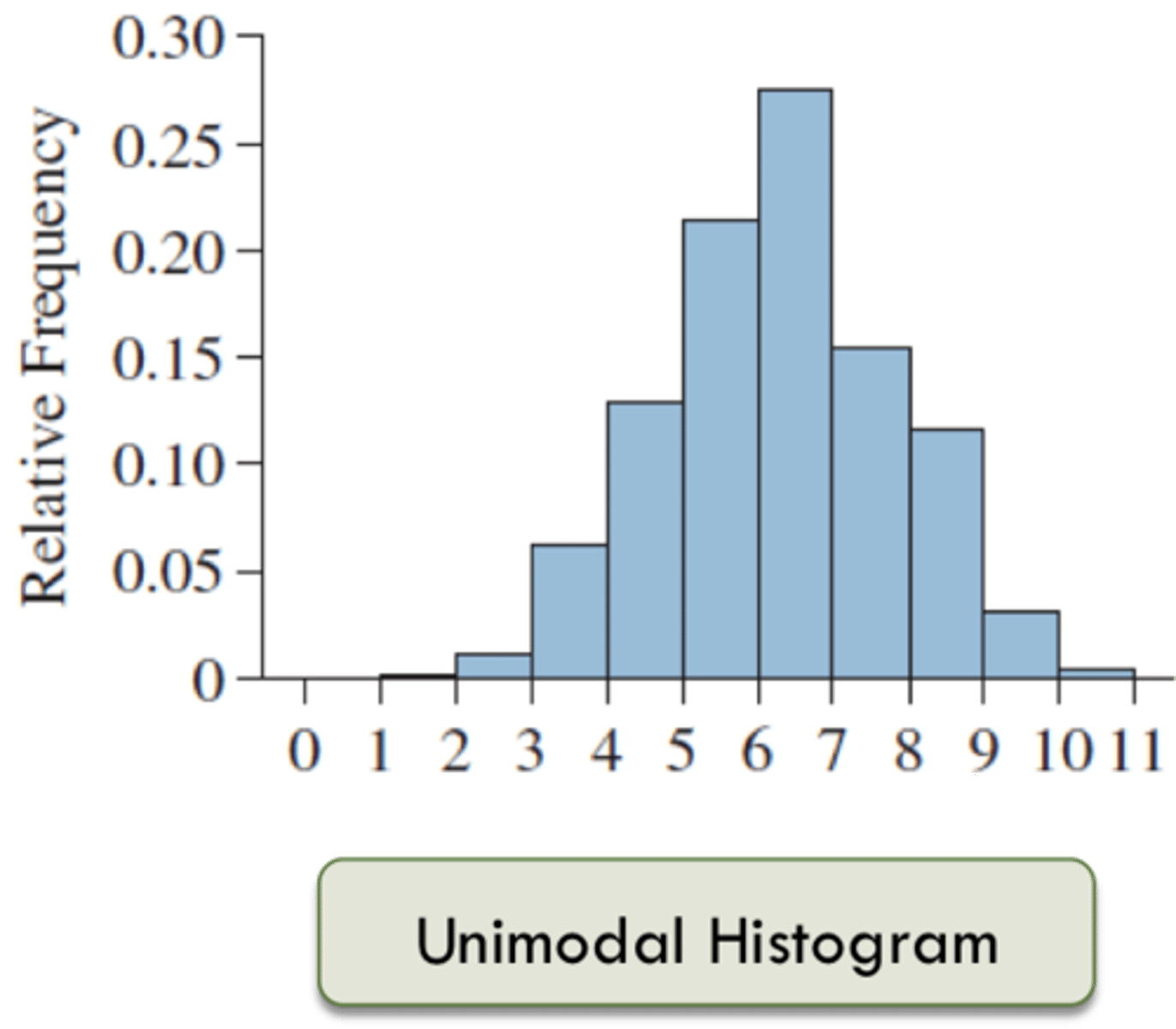
Bimodal
two modes
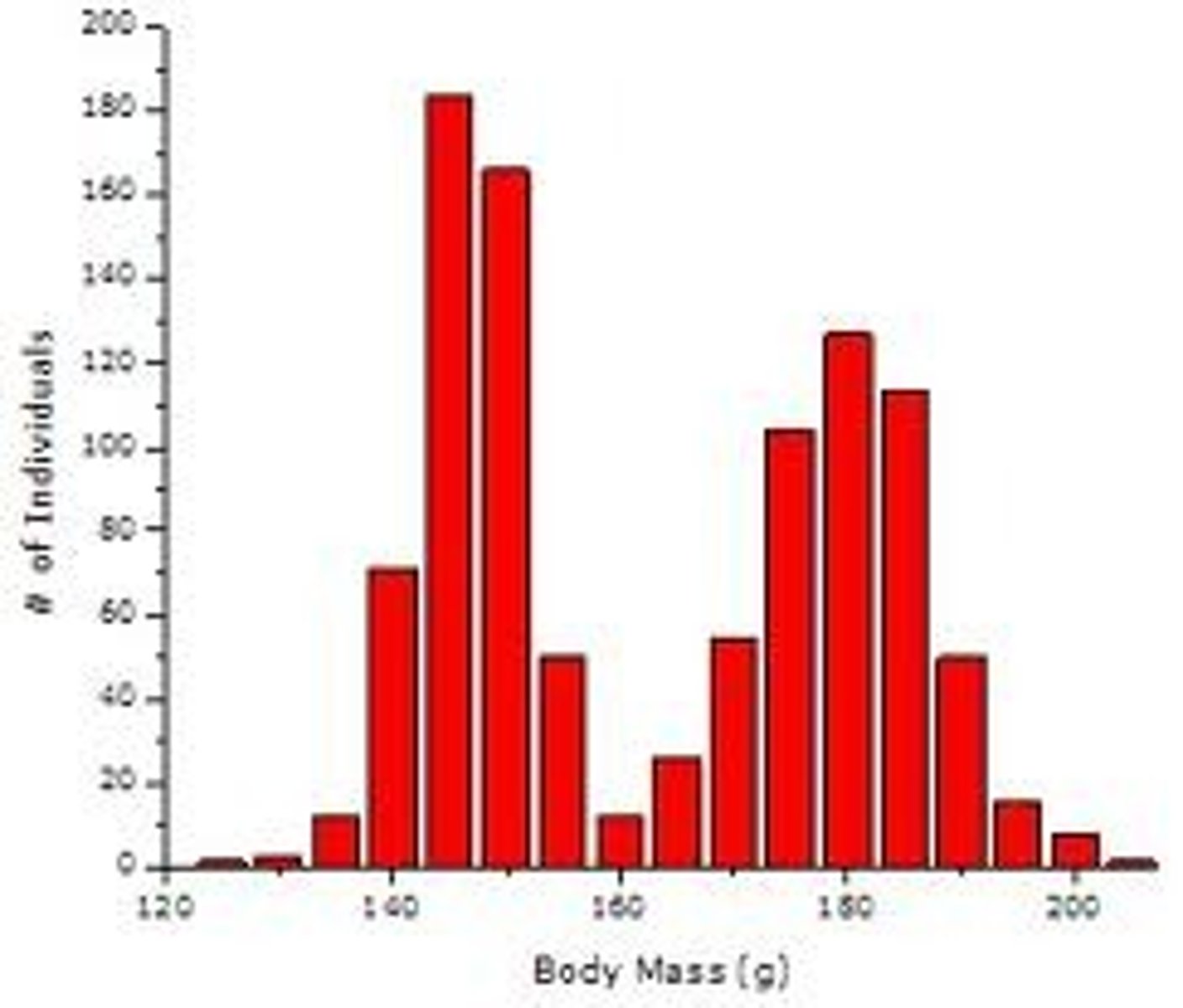
Uniform
no apparent peaks
Symmetric
the left hand side is roughly the mirror image of the right hand side. (bell-shaped)
Right-Skewed
(positively skewed) : long tail to the right
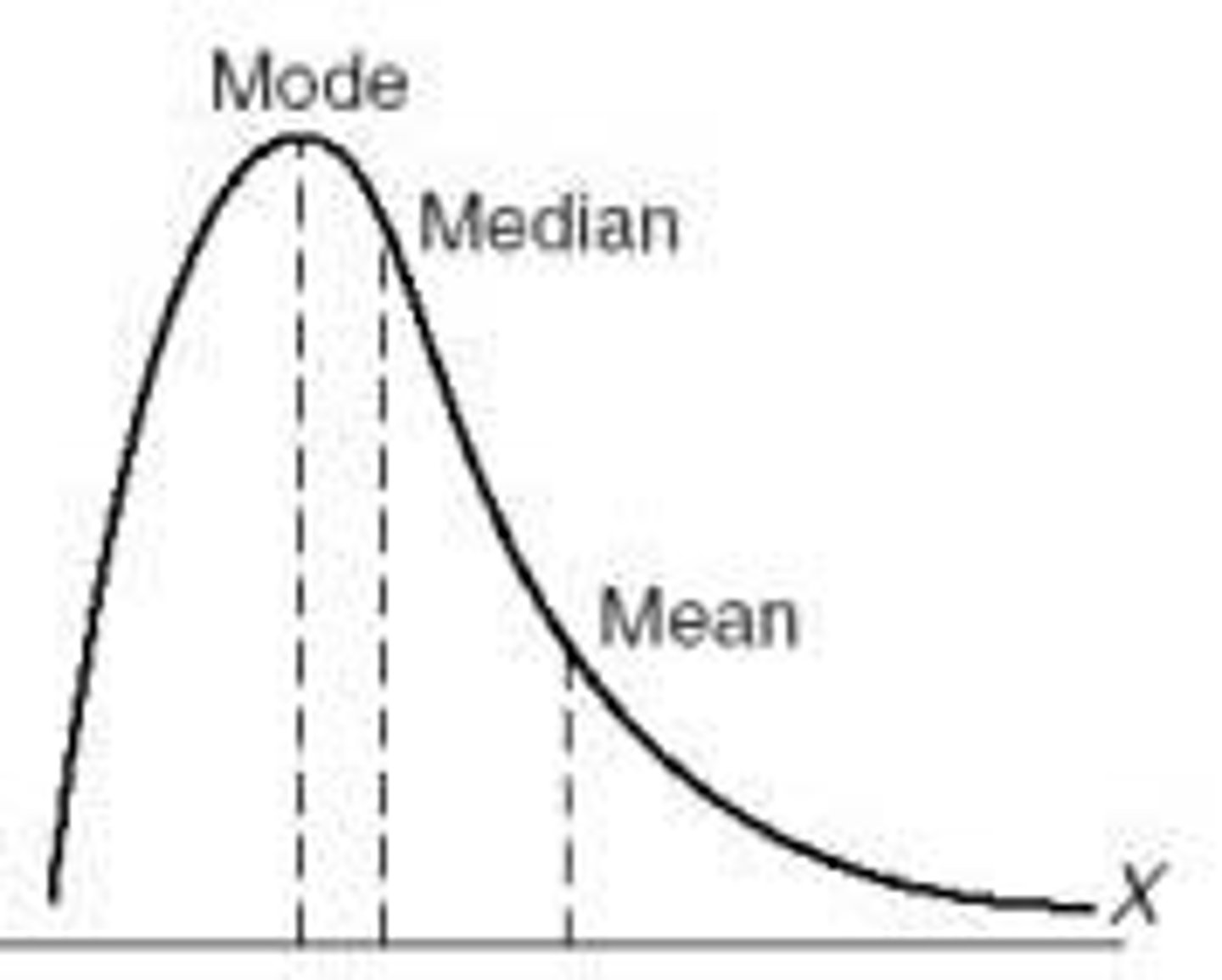
Left-Skewed
(negatively skewed) : long tail to the left
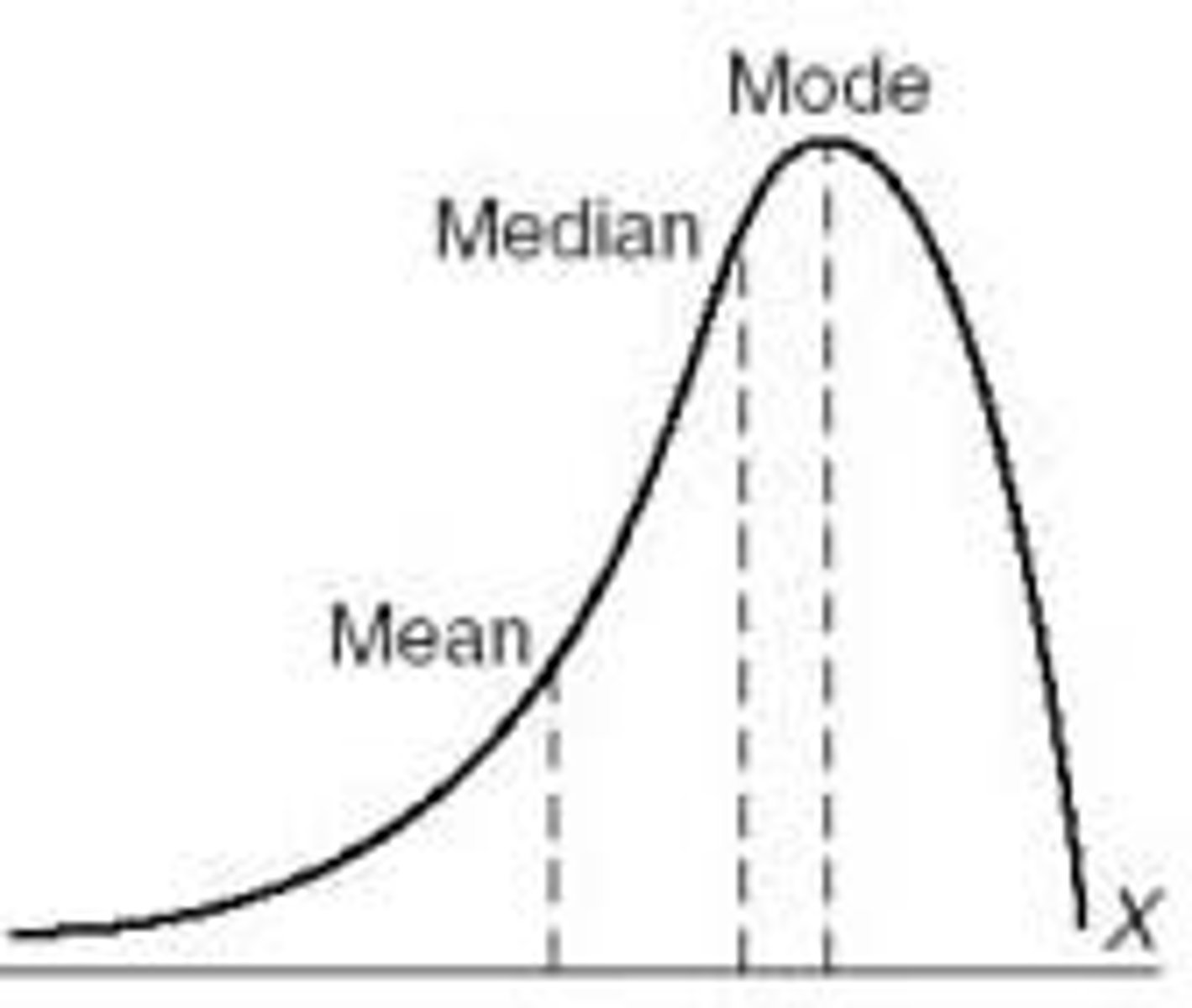
Outliers
unusually large or small values in the distribution
typical value
not necessarily center in location. Whether its in the center or not
spread/ variability
how spread out the data is from the center
When the data values are tightly clustered around the center of the distribution, the spread is small
When data values are scattered far from the center, the spread is large
Bar Chart
Displays counts of each category next to each other for easy comparison. May put relative frequency proportions for each category. Best for categorical data
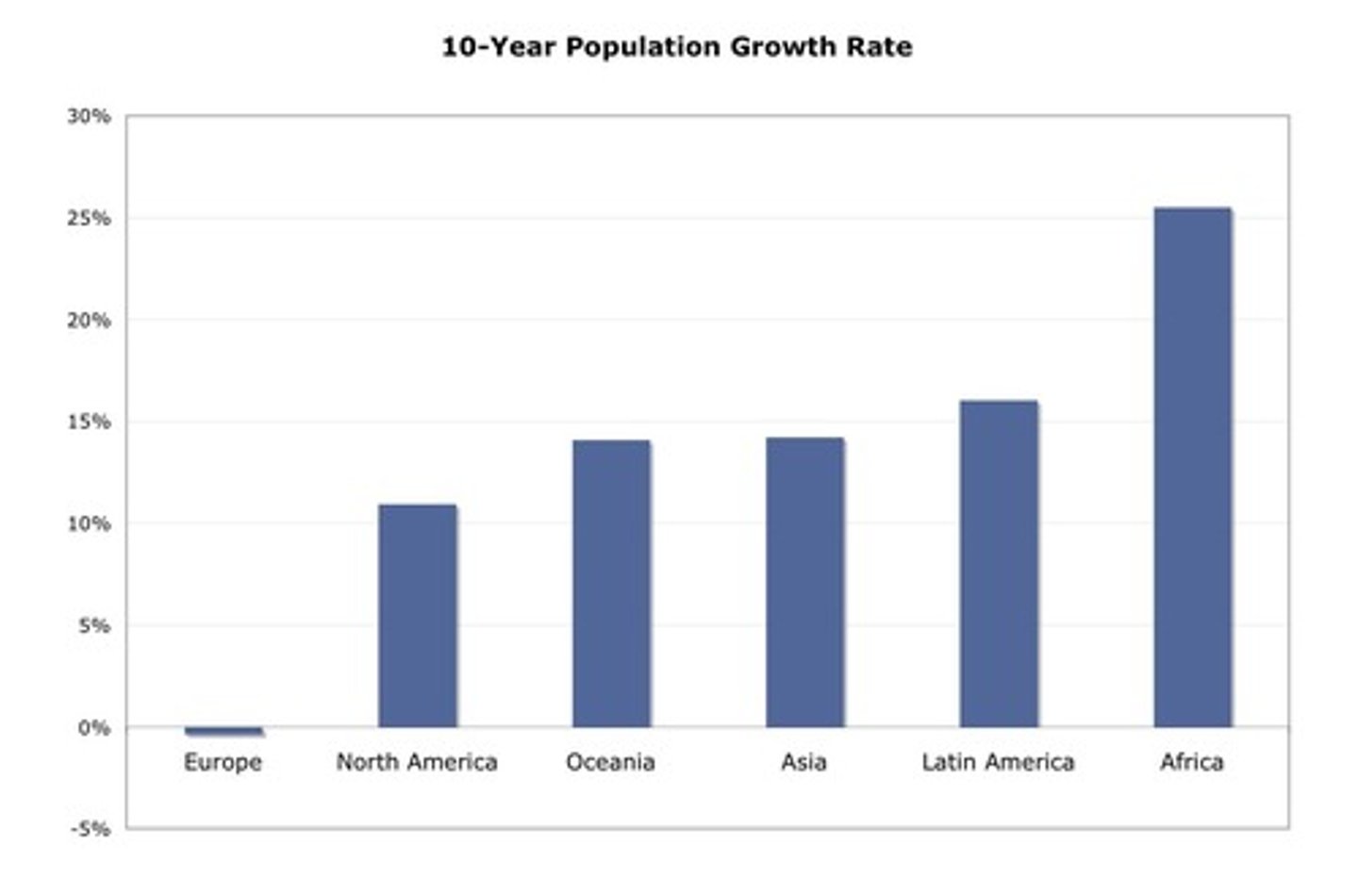
Mean
The center as a balancing point. Arithmetic average (calculation)
standard deviation
The average distance of a value from the mean.
It measures how far away the typical observation is from the mean. In symmetric, unimodal distributions, the majority (more than half) of the observations are less than one ---- from the mean.
Empirical Rule
A rough guideline, a rule of thumb, that helps us understand how the standard deviation measure variability. According to the ----, 68% of the data will fall between 85 and 115 (one SD from the mean), 95% of the data will fall between 70 and 130, and 99.7% of the data will fall between 55 and 145.
z-score
measure the distance of each data value from the mean in standard deviations. A negative --- tells us that the data value is below the mean, while a positive --- tells us that the data value is above the mean.
magnitude
of z-score (absolute z-score) implies the'unusualness' of the observation regardless itsdirection.
median
The center as the middle (half-way point)
IQR
tells us how much space the middle 50% of the data occupy.
scatterplot
are the best way to start observing the relationship and the ideal way to picture associations between two numerical variables.you can see patterns, trends, relationships, and even the occasional extraordinary value sitting apart from the others
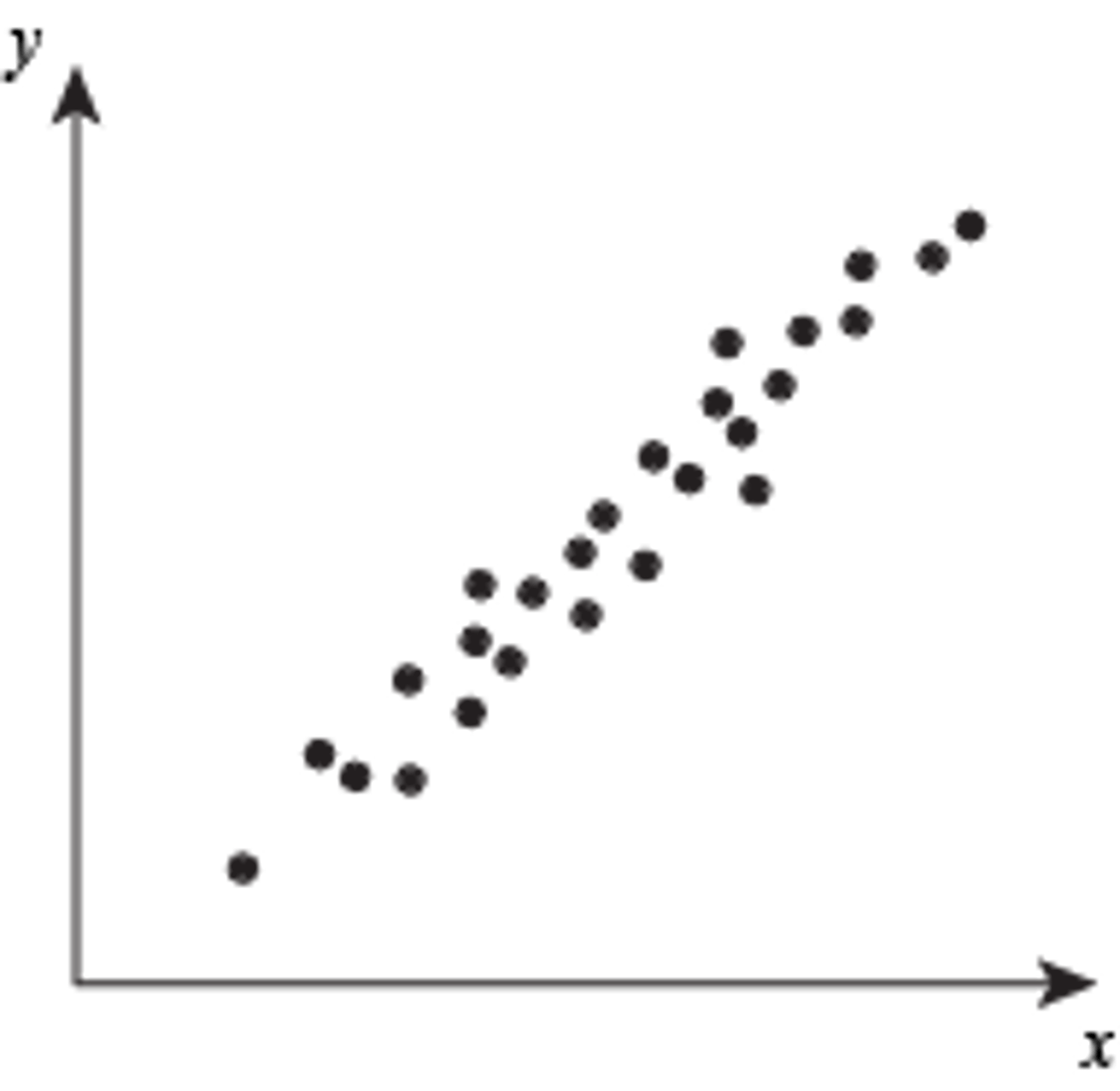
explanatory variable
The variable in the x-axis (aka independent variable)
response variable
the variable on the y-axis is called the (aka dependent variable)
linear
If the points appear as a cloud or swarm of points stretched out in a generally consistent, straight form, the form of the relationship is
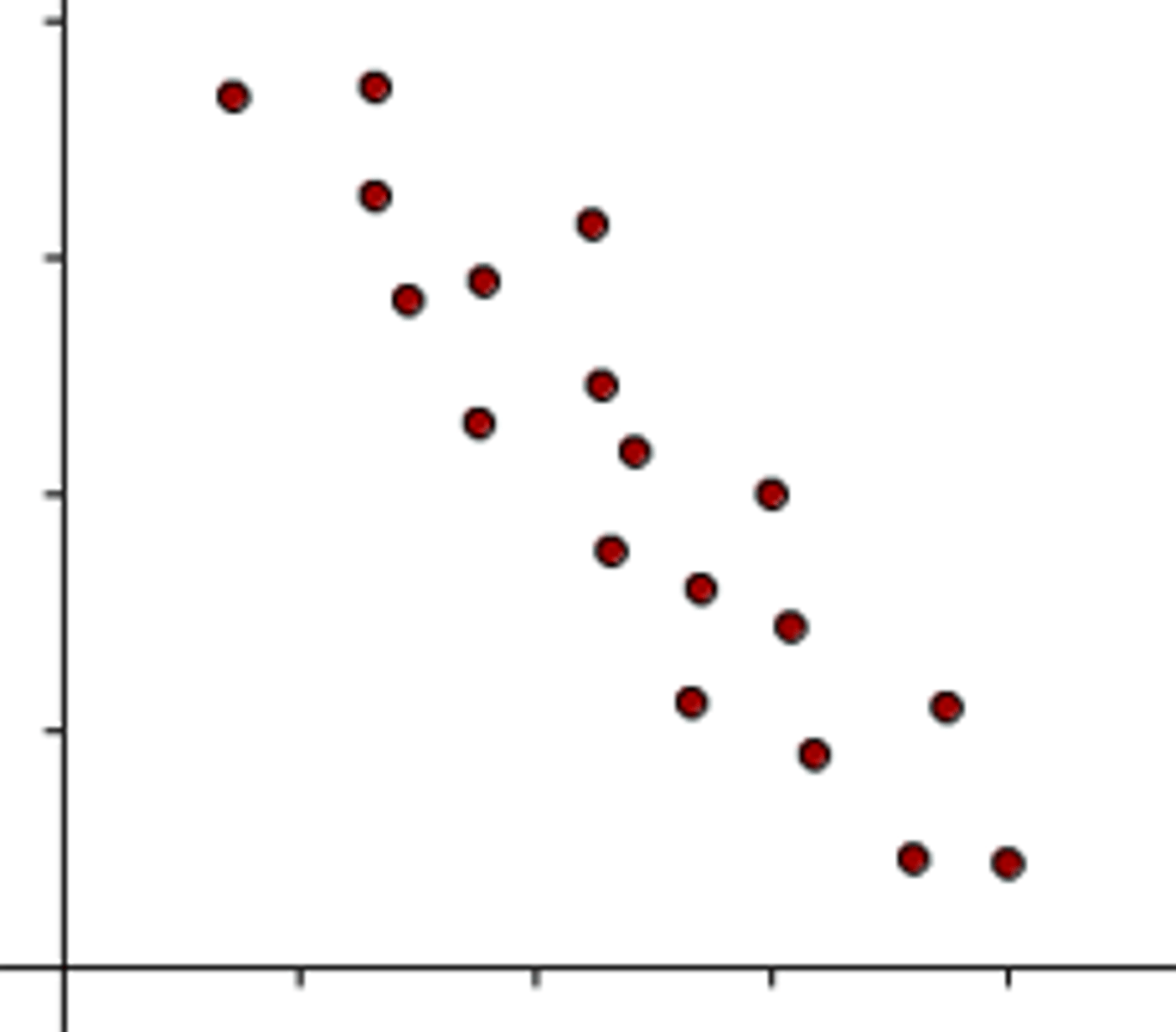
correlation coefficient
(r) gives us a numerical measurement of the strength of the linear relationship between the explanatory and response variables. A correlation near zero corresponds to a weak linear association.
regression line
Tool for making predictions about future observed values. Provides us with a useful way of summarizing a linear relationship
predicted value
The estimate made from a linear model. denoted as ^Y
residual
The difference between the observed value and its associated predicted value
line of best fit
the line for which the sum of the squared residuals is smallest. Among possible regression lines, find the line that minimizes the sum or squared residuals.
random
no predictable pattern occurs and no digit is more likely to appear than any other
theoritical probability
the relative frequency at which an event happens after infinitely many repetitions.
trial
Each time you hit shuffle
outcome
The song that plays as a result of hitting shuffle
sample space
the collection of all possible outcomes of a trial
event
A combination of outcomes
independent
the outcome of one trial doesn't influence or change the outcome of another.